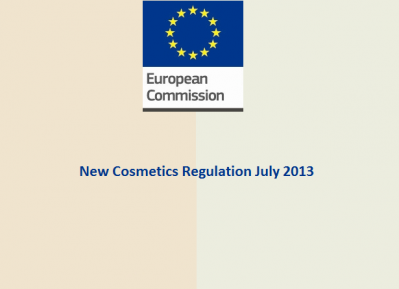EU cosmetic claim substantiation could be a time-bomb – expert. Part II

In the second part of this article we look at specific instances of how the regulation might affect claims, and what might be done to avoid confusion in the future.
The Cosmetic Product Regulation (CPR), was introduced as part of the updated Cosmetics Directive in July 2013 and is now fully in force, with a ‘common criteria’ that Dr. Lintner claims to be open to a broad interpretation that lacks cohesion.
Skin care as an example of the regulatory gray areas
Dr. Lintner refers to skin care as an example of the degree of inconsistency with respect to product claims.
In this instance the consumer is able to choose the ‘right’ sun protection for their skin according to both price and the SPF, but he points out that such comparisons can become over-complicated when it comes to assessing other skin care functionality, including anti-wrinkle effect, moisturizing and skin toning/firming properties.
Although there are comprehensive testing methods to assess these various properties, this would be far too difficult and complex to translate into a harmonized claim that allows the consumer to make an informed choice, Dr. Lintner underlined in a presentation he gave last month at the NYSCC Science Symposium.
CPR regulation should be 'just the start'
“Will the industry face standardized and obligatory test methods, threshold values, minimum panel size and other straightjacketed requirements before being able to claim a ‘moisturizing’ or ‘wrinkle reducing’ or ‘oil control’ effect? Will specific ‘claim language’ be imposed?” Dr. Lintner stated during the presentation.
In short, Dr. Lintner believes that the ‘common criteria’ stipulated in the CPR should just be the start of the dialogue on product claims substantiation as it does not meet the requirements of the consumer.
But the solution is not straight forward, as differing ways of interpreting the regulation from country to country as well as different approaches to advertising claims are likely to add to the complexity.
Further building on CPR, making it more comprehensive
Dr. Lintner believes that the best approach will be to further build on the CPR by creating a more elaborate and comprehensive document that would spell out the minimum content of a ‘claim substantiation file’.
This kind of document should include methodology of in vitro and ex vivo testing, together with Good Clinical Practice for clinical tests, including specific details such as the stipulation of a minimum number of panelists, but should not be over-complicated by spurious 'authorization claims' for claim substantiation methods that are often driven by consumer groups.
“A framework for constituting a claim substantiation file that becomes an EU standard makes sense; instituting standardized claims does not make sense,” Dr. Lintner concludes.











